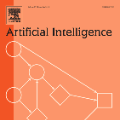Artificial intelligence (AI) has witnessed a substantial breakthrough in a variety of Internet of Things (IoT) applications and services, spanning from recommendation systems to robotics control and military surveillance. This is driven by the easier access to sensory data and the enormous scale of pervasive/ubiquitous devices that generate zettabytes (ZB) of real-time data streams. Designing accurate models using such data streams, to predict future insights and revolutionize the decision-taking process, inaugurates pervasive systems as a worthy paradigm for a better quality-of-life. The confluence of pervasive computing and artificial intelligence, Pervasive AI, expanded the role of ubiquitous IoT systems from mainly data collection to executing distributed computations with a promising alternative to centralized learning, presenting various challenges. In this context, a wise cooperation and resource scheduling should be envisaged among IoT devices (e.g., smartphones, smart vehicles) and infrastructure (e.g. edge nodes, and base stations) to avoid communication and computation overheads and ensure maximum performance. In this paper, we conduct a comprehensive survey of the recent techniques developed to overcome these resource challenges in pervasive AI systems. Specifically, we first present an overview of the pervasive computing, its architecture, and its intersection with artificial intelligence. We then review the background, applications and performance metrics of AI, particularly Deep Learning (DL) and online learning, running in a ubiquitous system. Next, we provide a deep literature review of communication-efficient techniques, from both algorithmic and system perspectives, of distributed inference, training and online learning tasks across the combination of IoT devices, edge devices and cloud servers. Finally, we discuss our future vision and research challenges.
翻译:人工智能(AI)见证了从推荐系统到机器人控制和军事监视等一系列从推荐系统到机器人控制和军事监视等各种事物的互联网应用和服务的巨大突破,其驱动力来自较容易获取感官数据,以及产生实时数据流zettabyte(ZB)的广度/无处不在的装置的巨大规模。使用这些数据流设计准确的模型,以预测未来的洞察力并革命决策过程,将普遍存在的系统作为更深层次的服务器质量的有价值的范例。普遍的计算和人工智能、渗透性AI的结合,扩大了无处不在的IOT系统的作用,从主要数据收集到分散的计算,除了集中学习之外,还提出了各种挑战。在这方面,应当设想在IOT设备(例如智能手机、智能车辆)和基础设施(例如边缘节点和基础站)之间开展明智的合作和资源时间安排,以便避免通信和计算间接费用和确保最大性能。在本文件中,我们首先对无处不在的IAT系统进行一项全面的研究,然后对最新技术的分布进行在线分析,然后我们通过直观的系统进行一项在线数据分析,然后对资源结构进行实地分析。


